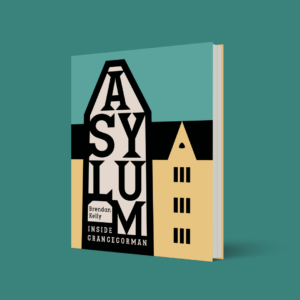
Asylum: Inside Grangegorman| by Brendan Kelly|Royal Irish Academy, 2023
Brendan Kelly tells the stories of patients and staff at the Richmond District Asylum in Grangegorman, Dublin
The mental asylums are Ireland’s awkward institutions. They were designed to treat and contain the mentally ill but soon assumed a life of their own: meeting the complex needs of troubled families (often unrelated to mental illness); alleviating social problems in surrounding communities (especially during times of poverty, famine or political unrest); and—possibly most of all—supporting local economies by employing tens of thousands of people, often in areas of the country with limited alternative employment.
Brendan Kelly tells the stories of patients and staff through case histories drawn from the archives of one institution, the Richmond District Asylum in Grangegorman, Dublin.
The stories are both extraordinary and disturbing.

Extract from Asylum, by Brendan Kelly
Not everyone ended up behind asylum walls forever. Occasionally, there were escapes. Richard K., for example, a 27-year old member of the army reserve, was committed to the Richmond as a ‘dangerous lunatic’ in 1907 because he ‘did threaten to take his life’. Admission notes describe Richard as ‘very depressed’: Constable states that patient came to the police station last night and gave himself up, saying that he was going to commit suicide. Today he asked the police to shoot him. Patient is very depressed. He says he is looking for his mother (who is dead). She came to him last night and asked him to go to her. He also hears her voice without seeing her. He has disgraced himself and disgraced all his people.
Three years after admission, Richard was still hearing voices: ‘Any time they call me, I answer them’, he said.
Two weeks after admission Richard showed ‘slight improvement’, but over the following months he continued to hear ‘two or three voices talking to him at the same time’. After 18 months in the Richmond, however, he was ‘cheerful and apparently in good spirits but still hears the voices calling him names’. By this point, Richard was working on the asylum grounds, like a great number of the other male patients.

Three years after admission, Richard was still hearing voices: ‘Any time they call me, I answer them’, he said. Clinical notes record that ‘at times he becomes violent and will strike anyone near him suddenly’. Two months later, while working in the grounds, Richard escaped from the Richmond, and attempts to re-capture him were unsuccessful. Escape was not enormously difficult, especially for those working in the grounds: there were walls, but there was also constant traffic in and out the asylum gates. In his absence, Richard was declared ‘discharged, not improved’, after three years and two months in the asylum. There is no record of what became of him.













